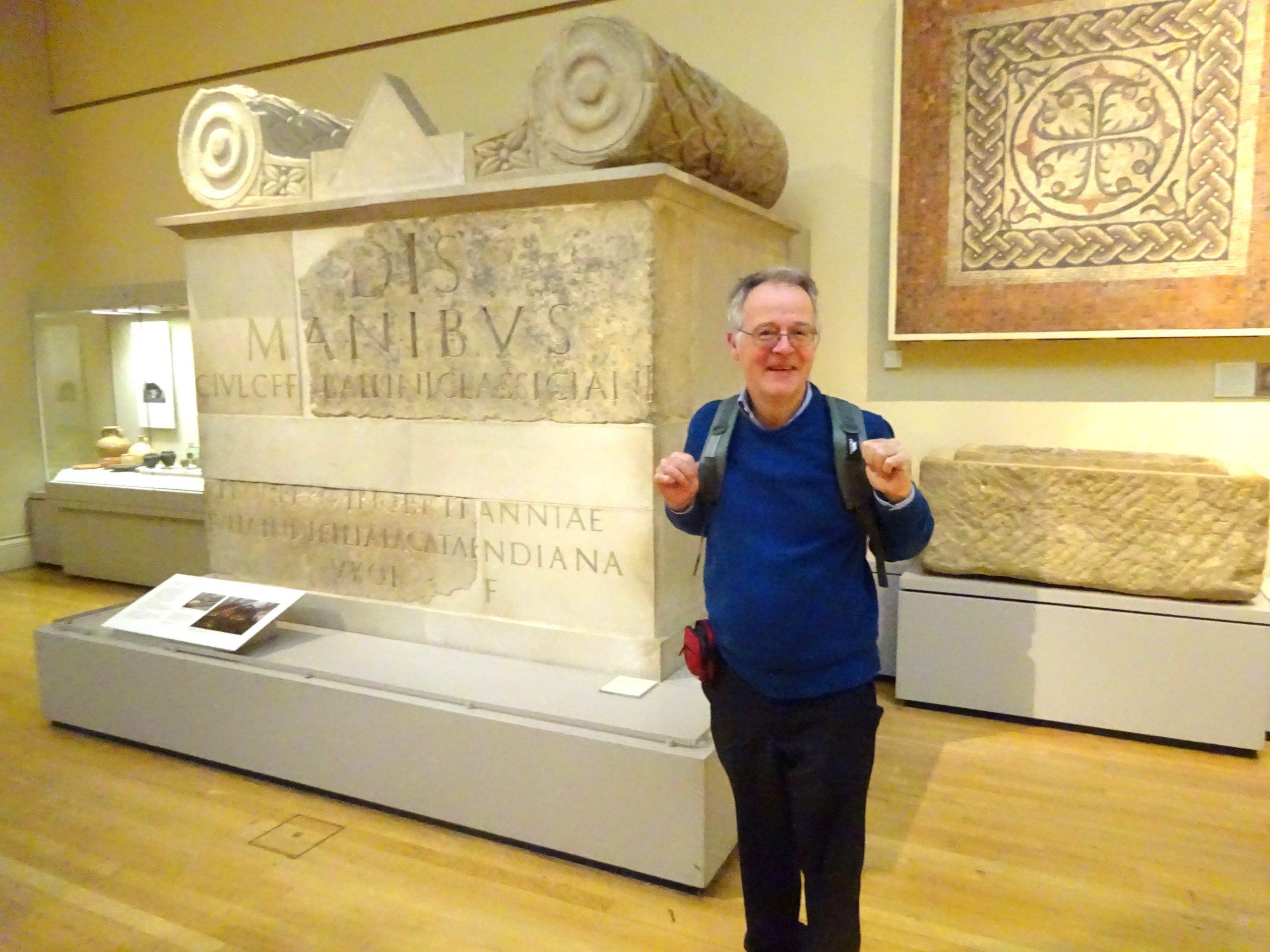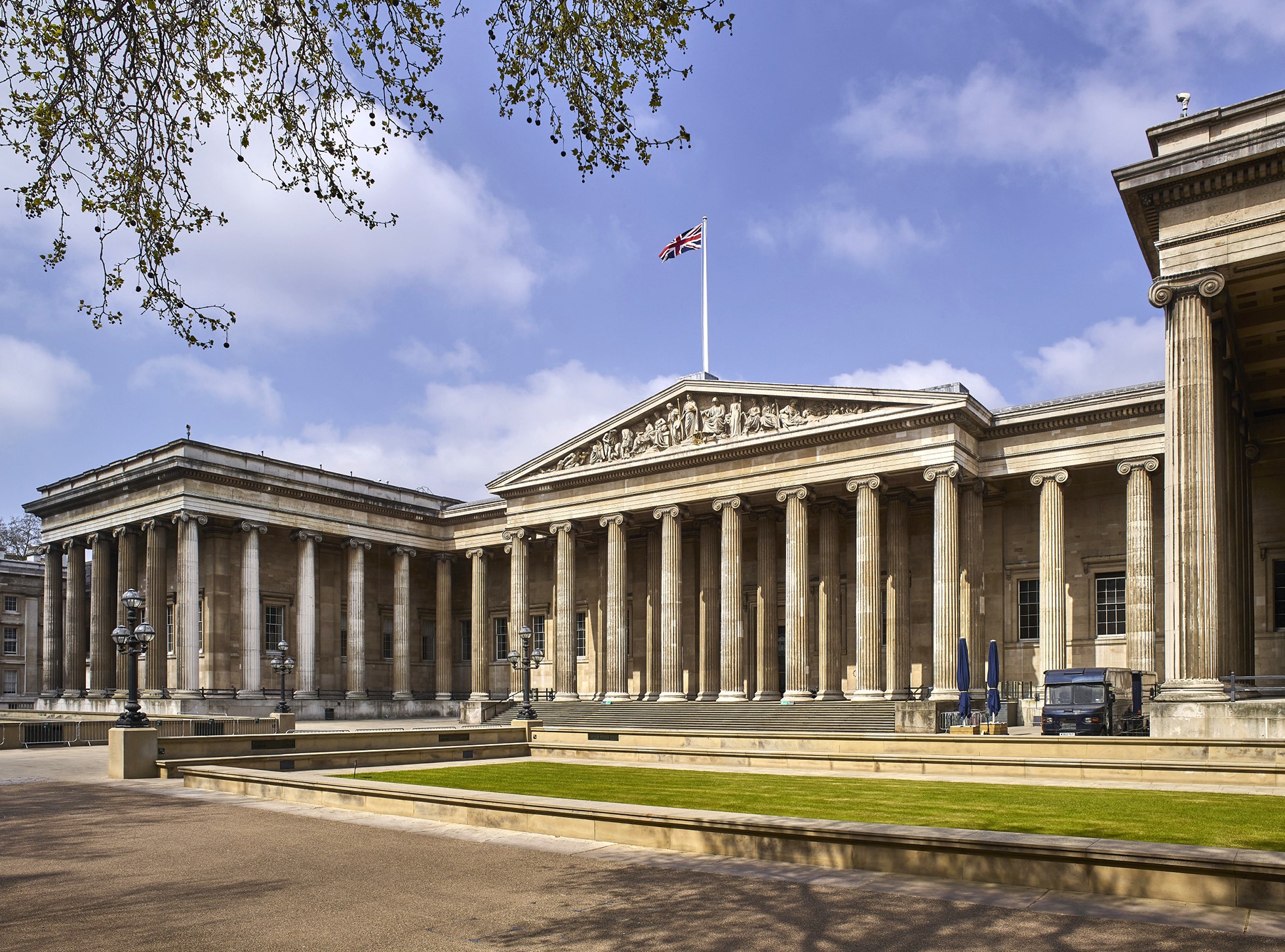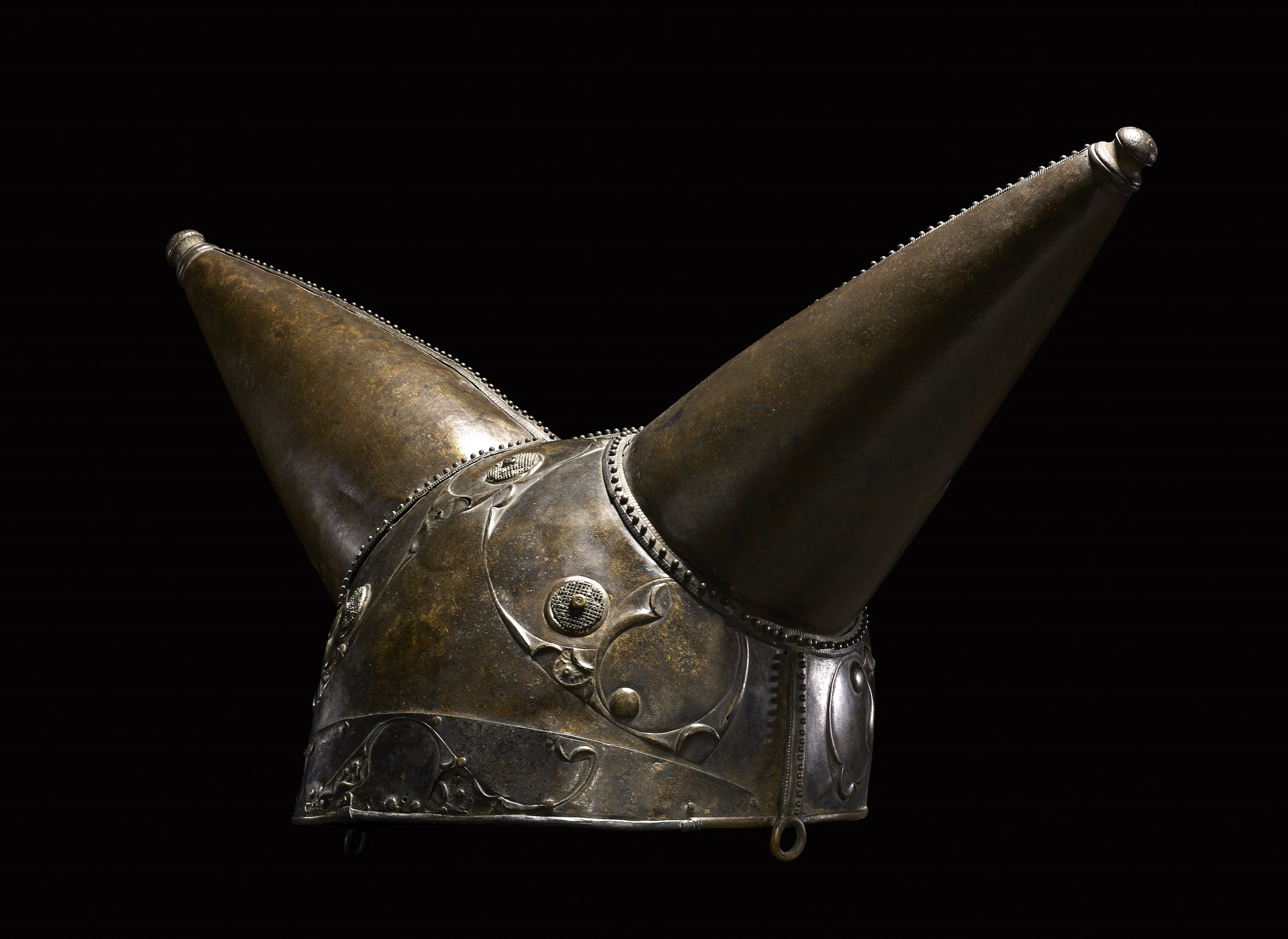
Two of the most famous examples of Iron Age Celtic art, the Battersea Shield and the Waterloo Horned Helmet, were dredged from the mud of the River Thames during the 19th Century. A short walk along the riverbank between the two sites takes you through the heart of central London, past a monument to Boudicca (or Boadicea) – a Celtic queen who led a rebellion against the Romans. Today the shield and helmet can be seen in the British Museum, not far from where they were found. Both the objects and the rebellion have influenced Britain’s views of its Celtic past.
In 1857, the British Museum purchased an elaborately decorated bronze shield, from Henry Briggs – “a labourer” who “made a steady income selling artefacts mainly or exclusively from the Thames.” The price, £40, was a year’s wages for many working-class people. The British Archaeological Society reported that “the exact spot has been most jealously concealed by both workmen and curiosity dealers”. Through covert means, they discovered that the shield was found amongst skulls and weapons near a bridge under construction, Chelsea Bridge, where I planned to begin my walk.
The shield was dated to the late Iron Age when Britain was occupied by Celtic-speaking peoples. Southeast Britain is generally flatter than the North and West, with more fertile soils supporting denser populations and generating greater wealth.
There were settlements and hillforts around London, though nothing we would now recognize as a town or city. The shortest crossings from continental Europe lie to the southeast, so the region was the first target for the Roman invasions, which began under Julius Caesar in 55BC.
I wonder what he would think of Southeast England today. It is one of the most densely populated regions in Europe. My train journey to London took me past dozens of redevelopment sites, where tower blocks are replacing suburban housing. During the 1980s and early 1990s I lived all around London, in suburbs and villages in the greenbelt which surround the city. Back then, London was a filthy place and, after a few hours, your nose would fill with black soot. I used to come in for meetings or evenings out, but never to go walking.
Much has changed since then; successive mayors have removed traffic from many of the central areas and, in 1996, a national walking trail was opened along the River Thames. I arrived at Chelsea Bridge on a sunny February morning. The view across the river, towards the southern bank, is dominated by the old Battersea Power Station, where my grandfather used to work. It closed down in 1983 and is being redeveloped with cafes and restaurants on the ground floor and expensive flats above. I crossed over the bridge, which has also been replaced since the 19th Century.

A couple of barges and a Victorian sewage pumping station, built in Italianate style, are all that remains of old London on this stretch of the river.
Standing on the plaza in front of the power station I looked back towards the bridge and the water where the shield was found. Who threw it there, and why? Some historians speculated that it was used in battle against the Romans, but it shows no signs of battle damage. Today, archaeologists believe that it was probably a “votive offering” – thrown into the water in a religious rite, though to which gods, and for what reasons, we can only speculate.
The Thames Path runs along both sides of the river; I decided to follow the southern bank to Waterloo Bridge, where the helmet was found, and then to double back, to finish by the Boudiccan monument on the northern side – a walk of about 7 km.
More than any other European capital, London has always been a commercial city, shaped and reshaped by the ebb and flow of money.
Before Boudicca’s rebellion, the Roman writer Tacitus described it as “a busy centre, chiefly through its crowd of merchants and stores.” Today, its central areas are rapidly growing skywards, increasingly resembling North American cities. Heading downstream from Battersea, the Thames Path diverts around one of many construction sites. It briefly joins a main road, near the U.S. Embassy – the new one which President Trump famously refused to inaugurate.
The path returns to the riverbank by a wharf with a few houseboats, looking like old relics amongst the glass towers and smart restaurants. At Vauxhall Bridge, the path diverts again, behind the headquarters of MI6, home of the real-life successors to James Bond. After the next bridge some of London’s best-known buildings come into sight. To the right is Lambeth Palace, home of the Archbishop of Canterbury, on the opposite bank the Houses of Parliament.
Beyond the next bridge, the London Eye stands in front of the Old County Hall. The Eye is a huge Ferris wheel, installed as a temporary attraction for the Millennium, but later made permanent. County Hall is now home to several tourist attractions and this area certainly attracts many visitors, along with street sellers and performers vying for their attention.
A little further, a footbridge offers the best viewpoint across the water where the horned helmet was found in 1868, during routine dredging of the river. Waterloo Bridge has also been replaced since then. The view beyond it is more impressive than the bridge itself, with the dome of St Pauls Cathedral surrounded by the tallest of London’s new skyscrapers.
The Boudiccan monument stands on the corner of Westminster Bridge, facing the tower of Big Ben, with a kiosk pressed against it. The warrior queen is flanked in her chariot by two daughters, who had their own reasons for wanting revenge against the Romans. An inscription on the side explains that it was erected in 1902, but does not mention that the sculptor, Thomas Thorneycroft, made the original model fifty years earlier. As he lacked the funds to cast it in bronze, he would not live to see its triumphant installation.
The British Museum, where I went the following morning, is only 15 minutes’ walk from Waterloo Bridge. Its imposing neo-classical building was completed in 1852, shortly before it acquired the shield and helmet. Its impressive collection has been a source of national pride but also accusations of imperial looting. At least the articles I had come to see were found nearby.
The British Museum confronts you with distractions as soon as you step into its galleries; I passed Egyptian mummies and Assyrian winged lions to reach Room 50, which houses the Iron Age collection. The shield and helmet were more impressive in real life than the photographs convey. The notes explain that the shield “would have had a highly polished, shiny surface” but it looks surprisingly bright as it is. What remains is only the frontispiece of a larger wooden shield, which has rotted away.

Within several of the circles on its surface you can just make out some red material, which is much brighter in real life. It is an opaque form of glass. This swirling style of decoration often disguises stylised images of plants, animals or even people. Ian Stead, a former curator, claimed to see eyes, lips and snail shells in the decoration of the shield. You have to use your imagination to see those, but you can see animal forms, stylized in a similar way, on some of the other shields in the same collection.
That artistic style is known as the La Tène style, after La Tène in Switzerland, which I visited and wrote about last year.
The La Tène collection, also believed to be votive offerings, was recovered from Lake Neuchatel in 1857, the same year as the Battersea Shield. That coincidence helped to create a view of Celtic art and culture, originating in central Europe and migrating with Celtic peoples to Britain and Ireland, which remained influential through much of the Twentieth Century. Today, most archaeologists believe those styles arrived through trade, rather than movement of peoples.
Horned helmets have also been misunderstood and misrepresented in the past. The stereotype of Vikings with horns was invented by artists in the 19th Century. There are a few contemporary images of Celtic warriors wearing horned helmets, but only two have been found in Europe – the other one in Bulgaria. They both seem more ceremonial than protective. The Waterloo helmet would be too small for most adult men. Was it ever worn, or was it made as an offering to the gods? We do not know.
The next room, devoted to the Roman era, has two objects linked to the Boudiccan rebellion. One is an eyeless bronze head of Emperor Nero. It was also found in a river, in Suffolk, in Boudicca’s territory. A note explains that it may have been torn off a statue during the rebellion. The other object is the tomb of Classicianus, a Romanized Celt, who replaced the governor of Britannia after the rebellion.
Like many colonizers, the Romans spread their domination through a mixture of brute force, assimilation of local elites, and indirect rule through client kings. One of these, Prasutagas, was King of the Iceni and husband of Boudicca, in the region northeast of London, known today as East Anglia. In 60 AD he died bequeathing his kingdom to both his daughters and the Roman Emperor, hoping to maintain his family’s position.
What happened next is still disputed. The only written sources we have come from Roman writers, who disagree on some details, but archaeological evidence corroborates the destruction they describe. According to Tacitus, the colonial authorities rejected Prasutagas’s offer, seized his lands, flogged Boudicca, raped his daughters, and enslaved the rest of his family. The Romans often perceived the higher status of women in Celtic societies as a strange anomaly. Casius Dio describes Boudicca as “possessed of greater intelligence than often belongs to a woman.” He says she “terrified all beholders” as she roused her people to attack the occupiers.
Later writers would present their rebellion as a pan-British fight for liberation, elevating Boudicca to the status of national hero. Journalists frequently compared Prime Minister Margaret Thatcher (no friend of the Celtic nations) to Boudicca.
Whether any sense of British, or Celtic, identity existed back then is questionable, but some other peoples did join the Iceni army.
Their first target was Camulodonum (Colchester), capital of Roman Britannia and a colony for military veterans who acted “as though they had received a free gift of the entire country driving the natives from their homes [and] ejecting them from their lands.” The hated colonists took refuge in the temple of Claudius, where they held out for two days until the Britons stormed the building, slaughtered everyone inside and destroyed the town.

At that time, most of the Roman armies in Britannia were fighting over 200 miles away in Anglesey, stronghold of the Druids. When word reached their commander, Suetonius, he ordered most of them to march south. A few days later he arrived in Londinium (London), where he evacuated those able to leave before the Iceni army arrived and destroyed it too.
Meanwhile, the main body of troops was moving towards an advantageous site to confront the enemy. After centuries of searching and speculation, we still do not know its location, but we do know the outcome: a total Roman victory. In her final speech, Boudicca had told her troops that “they must conquer or fall. Such was the settled purpose of a woman” whereas “the men might live and be slaves.” According to Tacitus, she poisoned herself, joining a long list of Celtic leaders who tried, but ultimately failed, to resist the might of the Roman Empire.
I had already begun investigating an earlier British resistance leader: Caratacus. His story also begins in Southeast Britain, moves to Wales and then to Rome. Standing in the Roman room of the British Museum I resolved to go where so many of these stories end – to Rome itself.
Story by Steve Melia / www.stevemelia.co.uk




















Leave a Comment